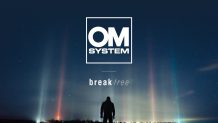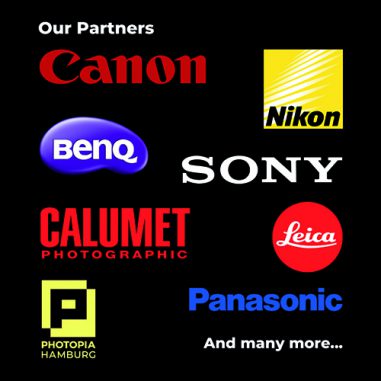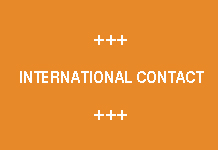Despite a challenging global economy, the company achieved improved profitability and cash generation before restructuring in 2009, while creating a lean cost structure and continuing to invest in innovative, higher-margin digital products. Over the next three years, Kodak will leverage its expanding portfolio of digital and traditional businesses, and will continue its focus on operational efficiency, to deliver increased revenue, earnings, and cash flow.
For 2010, on a continuing operations basis, Kodak expects: Segment earnings from operations of $350 million to $450 million on total company revenue of between $7.5 billion to $7.7 billion. This equates to GAAP earnings from continuing operations before interest expense, other income (charges), net and income taxes of $275 million to $375 million; 2010 GAAP earnings from continuing operations in the range of negative $50 million to positive $50 million; Digital revenue growth of 5% to 9%, and overall revenue growth of 0% to 1%; Positive cash generation before restructuring, and, on a GAAP basis, net cash provided by continuing operations from operating activities of $50 million to $150 million; A year-end cash balance of $1.8 billion to $2.0 billion, after taking into account all cash actions, including modest debt payments due during 2010.
“Our strategy is working and we are on track toward sustained profitability,” said Antonio M. Perez, Chairman and Chief Executive Officer, Eastman Kodak Company. “We are successfully managing through one of the deepest global economic downturns in history, and we have emerged as a leaner, more competitive company. Today, Kodak is well-established in large markets, and we are gaining traction in new growth markets, with the broadest and most competitive portfolio of digital products in the company’s history. We have solid liquidity and the financial flexibility necessary to fully implement our strategy. In 2010 and beyond, we will fully utilize the innovative thinking of Kodak people to drive sustainable, profitable growth and increase the value of this great company.”
Both of the company’s digital business units – the Consumer Digital Imaging Group (CDG) and the Graphic Communications Group (GCG) – compete in large markets and are outpacing those markets by bringing to customers groundbreaking advances in imaging technology.
For 2010, the company expects revenues from its digital portfolio to grow by 5% to 9%, that, when combined with a more moderate decline in the company’s traditional business, results in an overall revenue growth of 0% to 1%. This digital growth will be driven on the consumer side (CDG) by an expanding portfolio of higher-margin digital cameras and devices, including the recently announced Kodak Slice Touchscreen Camera, Kodak Playsport Video Camera, and the Kodak Pulse Digital Picture Frame. The company also expects continued significant revenue growth and earnings improvement from its revolutionary line of consumer inkjet products, which produced market share gains and doubled the installed base during 2009. During 2010, Kodak expects to continue to grow market share for its consumer inkjet printers and significantly expand sales of high-margin ink and media.
On the commercial side, GCG growth will be fueled by increased sales of digital plates and presses, workflow software, document scanners, and new product introductions, including the Kodak Prosper Press Platform, a next-generation approach to continuous inkjet printing that provides offset-class quality, speed, reliability and increased productivity, and the recently commercialized Kodak Flexcel NX System, an innovative, flexible plate for the rapidly growing package printing market.
As the commercial printing industry continues to transition from traditional to digital technology, Kodak is uniquely positioned because the company offers the broadest range of digital and traditional solutions to assist printers through each stage of their transition.
The company’s Film, Photofinishing & Entertainment Group (FPEG) has maintained a strong market position in all of its key product categories, and continues to be a solid cash generator. The FPEG portfolio includes Entertainment Imaging products and services, traditional photofinishing, consumer and professional film capture and services, and products for industrial film markets.
For 2010, the company expects stable performance and a continued solid cash contribution from its Entertainment Imaging business, and moderation in the industry decline rate across its traditional product lines. In addition, Kodak is leveraging its expertise in materials and chemical science and coating technology to pursue revenue opportunities in large industrial markets around the world, including printed circuit boards, touch screen films used in smartphones, gelatin for pharmaceutical applications, bio fuel distillation, recycling and recovery, and other applications. As volumes decline for traditional photographic products, Kodak plans to pursue sales in these new markets to mitigate the decline of photographic products. This will be done by repurposing existing technology and assets.
Kodak enters 2010 with a strong cash position, solid liquidity, and the financial flexibility to fully implement its strategy for profitable growth.
The company’s target business model assumes, on average, a compound annual growth rate for digital revenues of 7% to 9% from 2010 through 2012, and a total company compound annual revenue growth rate of approximately 3% during that period.
Kodak’s target model for 2012 includes a gross profit margin goal for its digital businesses of 30% and a total company gross profit margin goal of 28%. The company’s goal for segment earnings from operations is 8% of revenue for the digital businesses and 7% of revenue for the total company. This total company goal equates to earnings from continuing operations before interest expense, other income (charges), net, and income taxes of 7% of revenue.
“We are regaining our momentum, our strategy is paying off, and our customers are embracing our distinctive value propositions in our new growth markets,” said Perez. “Kodak is a financially solid company with the broadest and most competitive digital product portfolio that we have ever had, a sustainable traditional business, a lean cost structure, leading intellectual property, and a well-respected brand. We expect customer demand for our digital products to continue to outpace the market, which positions us well for sustained profitability and increased shareholder value.”





